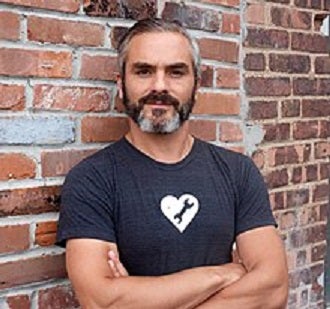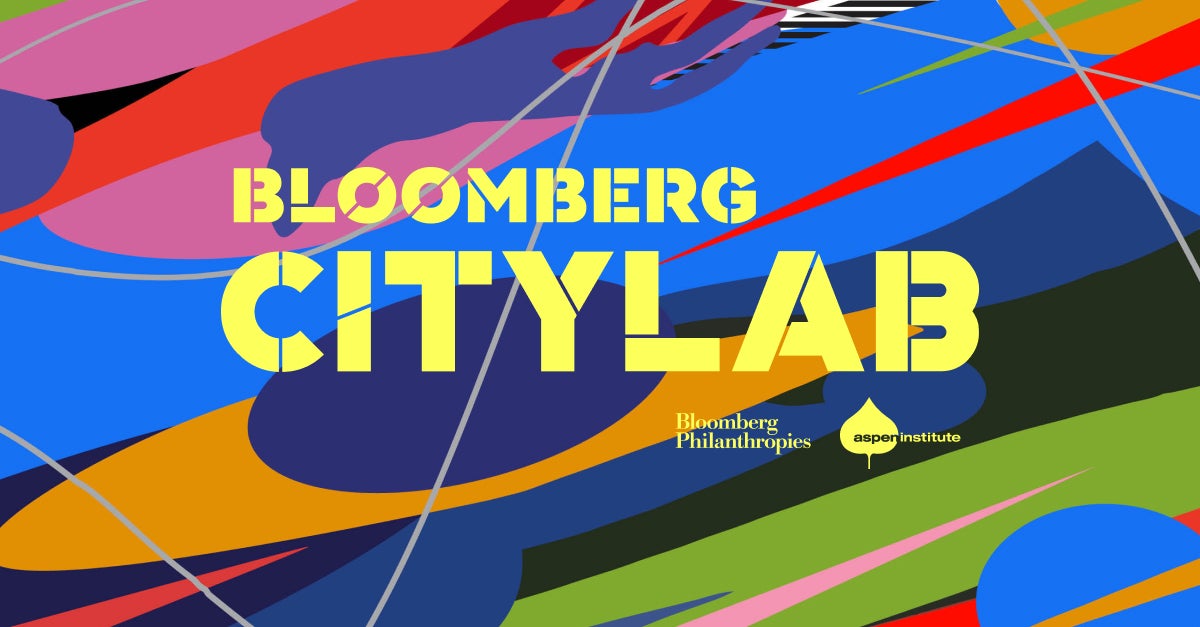Ben Berkowitz is the Chief Executive Officer of SeeClickFix, a request and work management technology for local governments. His inspiration for SeeClickFix came from a desire to improve his own community with his neighbors and his government.
This interview is part of the Aspen Institute Center for Urban Innovation’s series of conversations with inclusive innovation practitioners.
Jennifer Bradley: What does co-creation mean to you?
Ben Berkowitz: In the context of SeeClickFix, co-creation means empowering residents to decide what the future of their neighborhood looks like in conjunction and collaboration with their governments, their local officials, and their neighbors.

Ben Berkowitz, Chief Executive Officer, SeeClickFix
JB: How do you apply co-creation in your own work?
BB: In the old paradigm of reaching out to your government, you could do nothing but complain. It wasn’t necessarily easy to find the people that you wanted to fix your problem, and so you ended up searching the web or finding a phone number and then going through some kind of phone tree or being bounced around from one place to another. When you finally got someone on the phone who might be accountable, you were probably frustrated–even yelling–and you were probably not your best you. That made the person on the other end of the line not their best them.
We knew that there was a way for citizens to be more helpful in terms of shaping their surroundings. We created a platform to turn complainants into people that were helping by inviting them into the process of improving neighborhoods and helping governments be deliberate about asking for that assistance.
We also baked in this idea that government didn’t have to be the only one that could solve your problem. You might be able to solve your own problem. We wanted to leverage that idea of volunteerism and let that manifest itself naturally through the service request process. One of the founding philosophies of SeeClickFix is it’s not just the government that fixes things.
Transparency and sharing of responsibility and accountability are two big applications of co-creation within SeeClickFix. For us, transparency is huge in co-creation.
JB: What are the challenges that come with this commitment to co-creation?
BB: One challenge is, if you decide that everyone is responsible you run the risk of no one being responsible. Ultimately, the streets have to be fixed by someone. If the citizens don’t show up and don’t speak, and the government has become dependent on the residents to tell them what’s wrong, things can fall into disrepair pretty quickly. But that’s unlikely.
The bigger challenges come in not being able to demonstrate very early on the value of bringing more residents into the process to people who could stop [co-creation] from happening. For example, think of a Department of Public Works director whose entire relationship with the public has been historically adverse. Making the process more public might not be the first thing he or she would choose to do. That person could block a mayor or city manager’s desire to include more folks. The challenges are really in that kind of culture change that needs to happen within government, to include more people in the process.
JB: What would you tell an organization or a person that says, “I want to create something with the people that I’m trying to serve”?
BB: If I’m giving advice to other software developers who are trying to facilitate co-creation amongst organizations, I would say you definitely have to bake in certain mechanisms into the software and be rather opinionated about them. The platform will be social. The platform will be transparent. The platform will be open. From this openness and transparency, we expect accountability and we expect empowerment.
If you are looking to facilitate co-creation, some of the outcomes that you should be looking for are empowerment, increased trust, and efficacy. Making sure that you design the platform and the underlying algorithms for facilitating that trust is really key.
You also have to be really comfortable in standing your ground on some of these things. Some of these policies are values. What you’re ultimately doing is taking an organization that was not previously comfortable with co-creation and making some serious culture change.
It really comes down to trusting the fact that the people that you’re inviting into the process want to help, and, even if you had a particular relationship under the old way of doing business with that constituency, that relationship can change. People grow. A lot of times it’s not about the people, it’s about the system itself. This type of software is changing the system so that people can treat each other differently.
JB: What are the values that underlie co-creation for you?
BB: Transparency is a huge one. Transparency creates trust. Transparency creates efficiency by reducing redundancy because you can speak one-to-many, and you can also see when something has already been documented. There’s also trust and accountability–both byproducts of transparency.
Empathy is a big one. You can also see that something’s being worked on, and it creates empathy in both directions, so you can understand that an organization is stretched thin and that you’re not a single individual with one concern that stands alone. You’re an individual with one concern that is probably shared by other people amongst a greater pool of other concerns. Having that transparency both ways between citizens and government officials is incredibly helpful.
And kindness. We do not allow people to be jerks to each other on SeeClickFix. We made a decision that free speech for the sake of free speech is not a primary principle for us. There is a place for that, but here the respect comes above being able to spew whatever you want at another person in a hateful way.
JB: Is there anything that my questions did not elicit that you think is important about co-creation?
BB: I’m always excited when I see a clearly human response on the platform, one that expresses real empathy and thought. I don’t overlook it. I don’t take it for granted. There was someone who made a comment on the site the other day, along the lines of, “My leaf bags need a ride, yo.” The Department of Public Works replied, and they said something like, “We’ve picked up your leaf bags… yo.” It was a very human process happening. Those little moments are symbolic of where we’re headed if we get this right.
A few months ago, someone was frustrated about the polluting effects of outdoor camping [by homeless people]. The person living in the tent [that sparked the complaint] got on the site and posted, “Hey, my name is X, just a head’s up, I am also frustrated by the dumping… This mess is not coming from me. I’d love to sit down and get a coffee. Most people won’t talk to me because of the way I look.” I tweeted about it and a neighbor of mine said, “I took him up on the offer to get coffee and sat down with him.”
A complaint via a smartphone app about a homeless person leading to a constructive in-person conversation with that person–that’s really rare. That’s not the story you typically hear.
This interview has been edited and condensed for clarity.
This blog series is supported by the Citi Foundation, a vital early supporter of the Center for Urban Innovation at the Aspen Institute. With the Citi Foundation’s help, the Center convened leading-edge practitioners to develop a shared set of principles to guide a cross-sector approach to inclusive innovation in low- and middle-income neighborhoods, and to determine how the Aspen Institute could support this practice.


